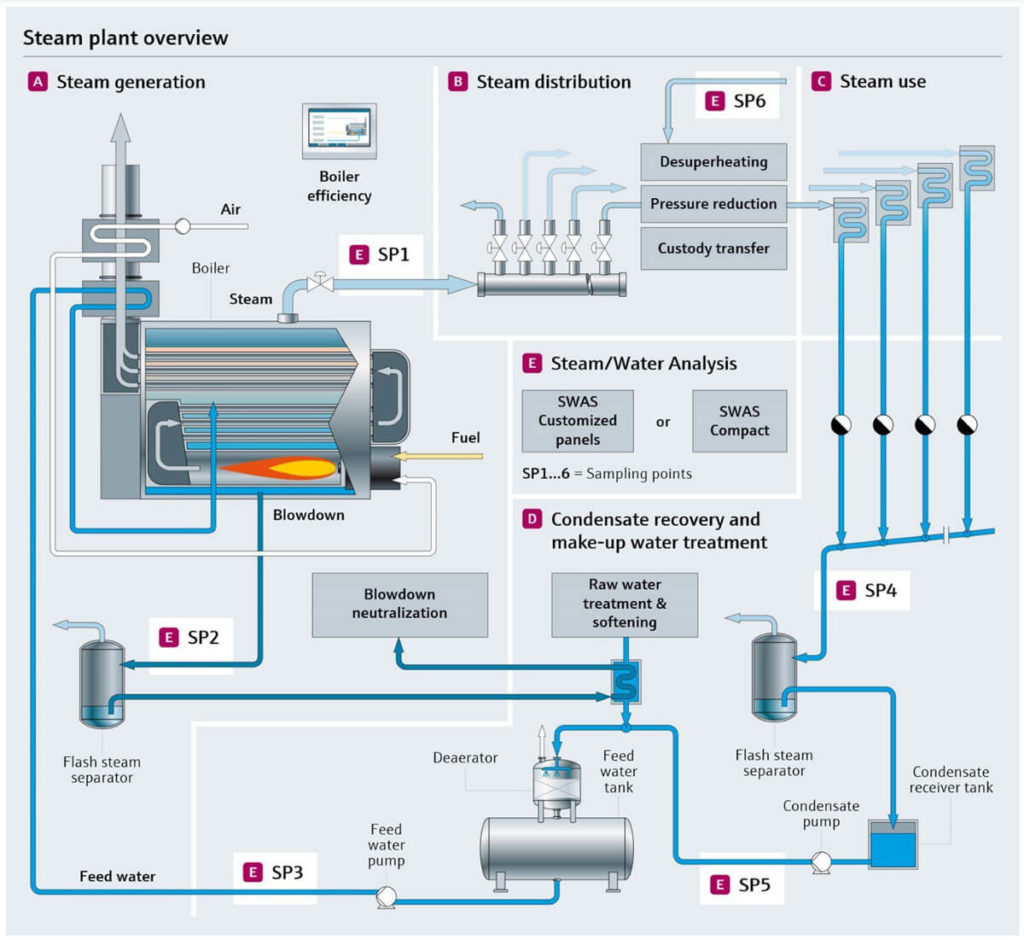Endress+Hauser highlights growing trends within the process automation industry
Discover the top 10 most viewed blogs of 2022 covering challenges and solutions across all industries May 9, 2023 – […]
For facilities where steam serves as a delivery mechanism for heat and pressure, generating that steam is a major cost. The process of heating water in a boiler consumes fuel to create steam in whatever temperature, pressure, and degree of dryness is necessary to support the desired processes. Once steam leaves the boiler, everything is at the mercy of the distribution system to determine if it reaches those processes in the form required, or the steam has lost all that expensive energy to convert it from water as it devolves back to warm water.
The distribution system can give away energy if it is not designed well or properly maintained. Long sections of uninsulated pipe are an obvious problem, but there are more subtle areas where loss is not so visible. The objective for a maintenance and reliability team is to avoid giving away two things: heat and water, because losing those means losing efficiency.
Process plant steam systems are closed to the greatest extent possible. Escaping steam pulls down efficiency, but so does condensate leaking out of a steam trap. Exhaust steam from the various processes must be saved and condensed back into water to recirculate as feedwater, and it must be kept as hot as possible so it can be reintroduced to the boiler at a temperature that requires the least fuel to turn it back into steam. Where condensate is still hot enough to flash into low pressure steam, it is allowed to do so for appropriate applications, utilizing all available energy. Even the heat of blowdown water is used to heat the raw water replacing it.
Determining where problems exist and measuring steam consumption throughout the system requires instrumentation. The difficulty of improving efficiency is that there are so many variables which can affect it. In fact, when looking at a complete steam system, virtually everything affects efficiency in one way or another, from combustion air temperature at the boiler, to a malfunctioning steam trap on the edge of a distribution line.
Boilers usually have basic instrumentation, although that can often be expanded and upgraded. Boiler control can also be improved by adding more sophisticated monitoring and data collection.
Each of these areas has its specialized instruments, but one of the most versatile tools for steam system analysis is the Prowirl F 200 vortex flowmeter family. These instruments can measure steam flow in any condition: superheated, saturated, or wet—and can even calculate mass flow, dryness fraction, and overall energy content. Placing flowmeters at strategic points in the distribution system provides a wealth of information used to improve operations.
The white paper offers insights into several critical areas within steam systems, including:
You can also check out other blogs in this series:

Discover the top 10 most viewed blogs of 2022 covering challenges and solutions across all industries May 9, 2023 – […]
Temperature measurement is a decisive factor in many industrial processes. Across all industries, accurate, fast and reliable measurement of process […]
Liquified natural gas (LNG) is a versatile energy source with a growing role worldwide. During custody transfer, quantity can be […]
Comments